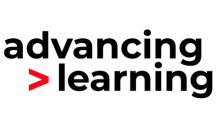To start this blog, I will ask you to search online ‘pictures of children learning in a classroom’. How many of the pictures show a teacher at the front of a class directing learning? How many show children learning without an adult? Why does the teacher have to be centre stage? Traditionally lessons are teacher led. The teacher decides what will be learned and how. Children are assessed according to the outcome the teacher choses. The teacher directs the learning of the students. Observing these lessons can be frustrating as children often ask a question that is not on the teacher’s learning agenda. These questions are often met with statements such as ‘we haven’t got time to learn about that now’. I have heard teachers reply ‘Please stop asking questions we haven’t got time for that’. Followed by ‘We have an assessment coming up’. These are valuable learning experiences that are sadly missed. When children ask these questions, they are engaged and interested in their learning. What might this approach say to children? This is not inspiring and doesn’t lead to a love of science or education as a whole. It can only lead to a lack of confidence in learning settings. Enquiry based learning embraces such opportunities. It is impossible to unpick the strategies and techniques of enquiry-based learning in this blog but I will try to provide some key pieces of information.
At the centre of enquiry-based learning there is a question. This question can be set by the teacher but learning around a question from a student is powerful. When a person genuinely wants to find something out, they will put unlimited amounts of energy and enthusiasm into the solution. When the teacher tells them what they should want to know the enthusiasm is hugely reduced.
So how do we get students to ask these powerful questions? I encourage teachers to use a stimulus or something to get them interested in the lesson content. These should be introduced at the beginning of a learning episode. Notice I don’t say a lesson. The reason being that you might want to introduce some new learning content at any time during a lesson. Learning stimuli work best with students that you know. Then you understand their interests and experiences and these can be used to get their attention. I have used posters from movies, TV or advertisements for games or gadgets. When studying the heart I made a bowl of blood with a heart floating in it. Sounds gruesome but that was the nature of the class I was teaching. Don’t worry it wasn’t real blood but paint and ink and the heart were made from coloured jelly. The children then drive the learning with their questions about the stimulus. Children and teachers need to be trained to engage in enquiry-based learning but my advice is tiny steps to make huge strides in learning and teaching. Try to plan an engaging stimulus and keep the questions coming.
LESSON PLAN
Introduction: To demonstrate enquiry-based learning as an alternative to teacher led learning.
Objective: Name the instrument used to measure force and name the unit of force
Resources: Spring balance or newton meter, objects that can be suspended from the spring balance and string.
Steps:
- Children need to be familiar with concept of forces for example pushes and pulls.
- Children should recognise that forces cannot be seen but their impact on objects can be observed.
- Provide children with the spring balance. Offer little guidance. Allow children to explore the equipment independently .
- Encourage children to observe the parts of the spring balance.
- Children should investigate the effect of pulling the hook and watching the dial on the scale.
- Ask children if there is a pattern between newtons and grams on the scale.
- Children should be provided with small objects to measure using the spring balance.
- Encourage children to hold the spring balance at eye level to allow them to take accurate measurements.
- Children can explore what happens if they look down on the scale or up at the scale.
- Children should use the spring balance to measure a range of objects.
- Encourage children to record their measurements.
| Object | Force in newtons | Weight in grams |
- Ask children to compare the readings in grams and newtons. Can they see a pattern?
- As appropriate children can use spring balances with larger and smaller scales to measure a greater range of objects.
Further thoughts: Some children might notice that the force is measured in Newtons and the weight in grams. For some children this could be an opportunity to begin the discussion about mass and weight. This is a huge misconception. Mass is measured in kilograms and grams and weight is a force measured in Newtons.
Children can make their own measuring devices using an elastic band and a ruler as the scale. This will only provide an estimate of mass and not an accurate reading. The principle of objects varying in mass can be observed using this example.



